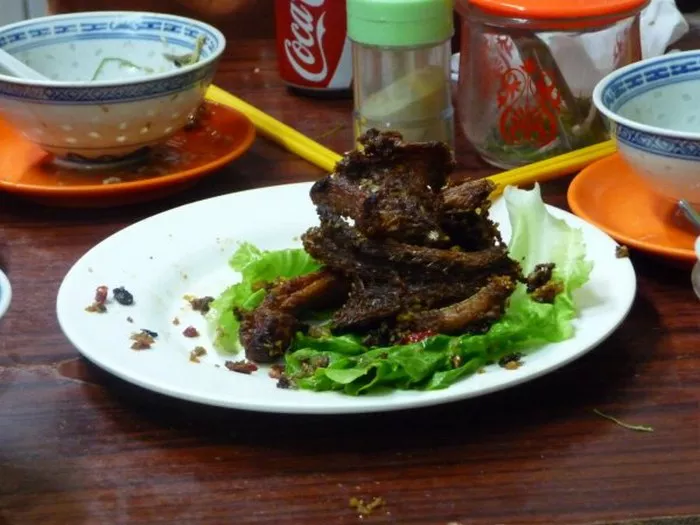Bacon, a beloved and savory delight enjoyed by many around the world, is a culinary masterpiece that transcends borders and cultures. While bacon has its origins in various countries, including the United States and the United Kingdom, there’s a growing interest in understanding the bacon offerings that originate in China. In this article, we dive into the world of Chinese bacon, exploring its unique flavors, preparation methods, cultural significance, and how it stands apart in the realm of this beloved cured meat.
A Journey Through Chinese Cuisine
Chinese cuisine is renowned for its diverse flavors, rich history, and intricate techniques. While many associate Chinese cuisine with dishes like dim sum and Peking duck, the world of Chinese culinary delights stretches far beyond these classics. Chinese bacon is a prime example of the depth and diversity that the country’s cuisine has to offer.
Varieties of Chinese Bacon: A Culinary Mosaic
Chinese bacon comes in a variety of styles, each showcasing unique flavors and preparation methods that reflect the regional diversity of China. Some popular types of Chinese bacon include:
1. Lap Cheong (Cantonese Sausage): This sweet and savory sausage is made by combining ground pork with a mixture of soy sauce, sugar, and various spices. Lap cheong is often air-dried or smoked and can be used in stir-fries, rice dishes, and even desserts.
2. Yunnan Ham: Hailing from the Yunnan province, this ham is renowned for its distinct flavor and aroma. It’s traditionally smoked over pine wood and has a slightly sweet and earthy taste. Yunnan ham is a staple in many Yunnan dishes and adds depth to soups and stews.
3. Nantong Bacon: Originating from the Jiangsu province, Nantong bacon is known for its delicate and tender texture. It’s typically air-dried and may be marinated in a mixture of soy sauce, wine, and sugar before being cooked. Nantong bacon adds a burst of umami to various dishes.
4. Neijiang Pork Belly: This type of Chinese bacon is made from pork belly that’s cured with a blend of spices, soy sauce, and other seasonings. It’s often air-dried and can be grilled, braised, or used as a flavoring agent in dishes.
5. Anhua Ham: Anhua ham, also known as Wuyi ham, comes from the Hunan province and is recognized for its smoky and earthy profile. It’s smoked with a combination of tea leaves, rice straw, and pine wood, imparting a unique flavor. Anhua ham is a crucial ingredient in many Hunan dishes.
Cultural Significance of Chinese Bacon
In Chinese culture, food is more than just sustenance; it’s a reflection of history, tradition, and social connections. Chinese bacon carries cultural significance that goes beyond its delicious taste:
1. Lunar New Year: Chinese bacon often finds its way onto dining tables during the Lunar New Year celebrations. It’s considered a symbol of prosperity and good fortune, making it a must-have ingredient for festive feasts.
2. Regional Identity: Different regions in China take pride in their unique styles of bacon. The preparation methods and flavors associated with each type of bacon contribute to the regional identity and culinary heritage of these areas.
3. Offering Hospitality: In Chinese hospitality, sharing food is a gesture of warmth and goodwill. Offering dishes prepared with Chinese bacon is a way of showing care for guests and loved ones.
4. Culinary Creativity: Chinese cooks have showcased their creativity by incorporating Chinese bacon into a wide array of dishes, from stir-fries and noodle dishes to soups and dumplings. Its versatility allows for experimentation in the kitchen.
Flavor Profiles That Captivate
The distinct flavors of Chinese bacon stem from the intricate preparation processes and regional influences. While the common element is the curing of pork, the spices, smoking techniques, and marination styles lead to diverse flavor profiles:
1. Sweet and Savory: Many varieties of Chinese bacon boast a delightful balance of sweet and savory flavors. The use of ingredients like soy sauce, sugar, and aromatic spices creates a harmonious blend of tastes.
2. Umami Explosion: The umami-rich taste of Chinese bacon adds depth and complexity to dishes. The combination of curing, marinating, and smoking results in a flavor profile that satisfies the palate.
3. Smokiness: Smoked Chinese bacon often carries a distinct smoky aroma that enhances the overall dining experience. Different smoking materials, such as tea leaves, contribute unique nuances to the flavor.
4. Aromatic Notes: Chinese bacon is often seasoned with a blend of spices and herbs that infuse the meat with enticing aromatic notes. These fragrant elements elevate the overall taste of the dishes it’s used in.
Incorporating Chinese Bacon into Your Culinary Adventures
Whether you’re an experienced home cook or a culinary enthusiast eager to explore new flavors, incorporating Chinese bacon into your dishes can open up a world of delicious possibilities:
1. Stir-Fries: Add slices of Chinese bacon to stir-fried vegetables or noodles for an extra layer of flavor and texture.
2. Fried Rice: Elevate your fried rice by incorporating diced Chinese bacon. The savory and smoky notes will infuse the dish with irresistible goodness.
3. Steamed Buns: Incorporate Chinese bacon into steamed buns or dumplings to create a delightful contrast between the tender meat and the soft dough.
4. Soups and Broths: Enhance the depth of soups, stews, and broths by adding Chinese bacon for a burst of umami and a hint of smokiness.
5. Rice Dishes: Mix diced Chinese bacon into your rice dishes for a savory twist that will elevate the entire meal.
In Conclusion
Chinese bacon offers a tantalizing journey into the world of flavors, aromas, and cultural richness. Its diverse varieties, preparation methods, and regional significance make it a captivating ingredient that stands out in the world of culinary delights. Whether enjoyed during festive occasions or as a regular addition to your meals, Chinese bacon brings a unique sizzle to your plate, showcasing the creative spirit and culinary artistry of China’s gastronomic traditions.






















